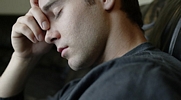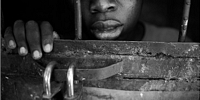|
|
 Acne (1,500) Acne (1,500)
 Addictions (1,500) Addictions (1,500)
 Advice (1,500) Advice (1,500)
 Allergies (1,092) Allergies (1,092)
 Alternative Medicine (1,500) Alternative Medicine (1,500)
 Anti Aging (1,500) Anti Aging (1,500)
 Breakup (1,500) Breakup (1,500)
 Cancer (1,499) Cancer (1,499)
 Dental Care (1,500) Dental Care (1,500)
 Disabilities (1,500) Disabilities (1,500)
 Divorce (1,500) Divorce (1,500)
 Elderly Care (1,498) Elderly Care (1,498)
 Goal Setting (1,500) Goal Setting (1,500)
 Hair Loss (1,500) Hair Loss (1,500)
 Health and Safety (1,497) Health and Safety (1,497)
 Hearing (1,500) Hearing (1,500)
 Law of Attraction (1,499) Law of Attraction (1,499)
 Marriage (1,500) Marriage (1,500)
 Medicine (1,497) Medicine (1,497)
 Meditation (1,499) Meditation (1,499)
 Men's Health (1,500) Men's Health (1,500)
 Mental Health (1,500) Mental Health (1,500)
 Motivational (1,500) Motivational (1,500)
 Nutrition (1,495) Nutrition (1,495)
 Personal Injury (1,499) Personal Injury (1,499)
 Plastic Surgeries (1,500) Plastic Surgeries (1,500)
 Pregnancy (1,496) Pregnancy (1,496)
 Psychology (1,500) Psychology (1,500)
 Public Speaking (1,500) Public Speaking (1,500)
 Quit Smoking (1,500) Quit Smoking (1,500)
 Religion (1,499) Religion (1,499)
 Self Help (1,500) Self Help (1,500)
 Skin Care (1,500) Skin Care (1,500)
 Sleep (1,500) Sleep (1,500)
 Stress Management (1,500) Stress Management (1,500)
 Teenagers (1,492) Teenagers (1,492)
 Time Management (1,500) Time Management (1,500)
 Weddings (1,500) Weddings (1,500)
 Wellness (1,500) Wellness (1,500)
 Women's Health (1,500) Women's Health (1,500)
 Women's Issues (1,500) Women's Issues (1,500)
|
Rehabilitation is the most important part of recovery after stroke. It helps build strength, coordination, endurance and confidence. For a stroke survivor, the rehabilitation goal is to be as independent and productive as possible. For this it's important to maintain and improve the person's physical condition. Rehabilitation begins early as nurses and other hospital personnel work to prevent secondary problems like stiff joints, falls, bedsores and pneumonia. These can result from being in bed for a long time. Positioning of the patient is one of first and most important considerations during early rehabilitation to prevent these problems. The dedicated team of professionals at Indicure take these necessary steps from the very beginning to enhance the functioning of the patient at the later stage. The room of the patient should be arranged to maximize patient awareness of the hemiplegic side. A bed positioned with the hemiplegic side toward the main part of the room, door and source of interaction (family, T.V.) stimulates the patient to turn toward and engage the affected side. Every consideration is given to positioning the patient out of undesirable postures (e.g. those that promote abnormal synergies and postures that can lead to bed sores or postural deformities). Correct positions encourage proper joint alignment, symmetry and comfort. Because patients spend a considerable amount of downtime in their room either in bed or in a chair, a positioning program can effectively address the risks associated with this inactive time. Variations in position can be effectively managed through the use of a positioning schedule. Prolonged static positioning in any posture must be avoided. Emphasis should be on increasing out-of-bed time and correct upright positioning in armchair/ wheelchair. For detailed information on Post Stroke rehabilitation, please log on to , , or write to mailto:drruchika.m@gmail.com" drruchika.m@gmail.com
|
|
|



